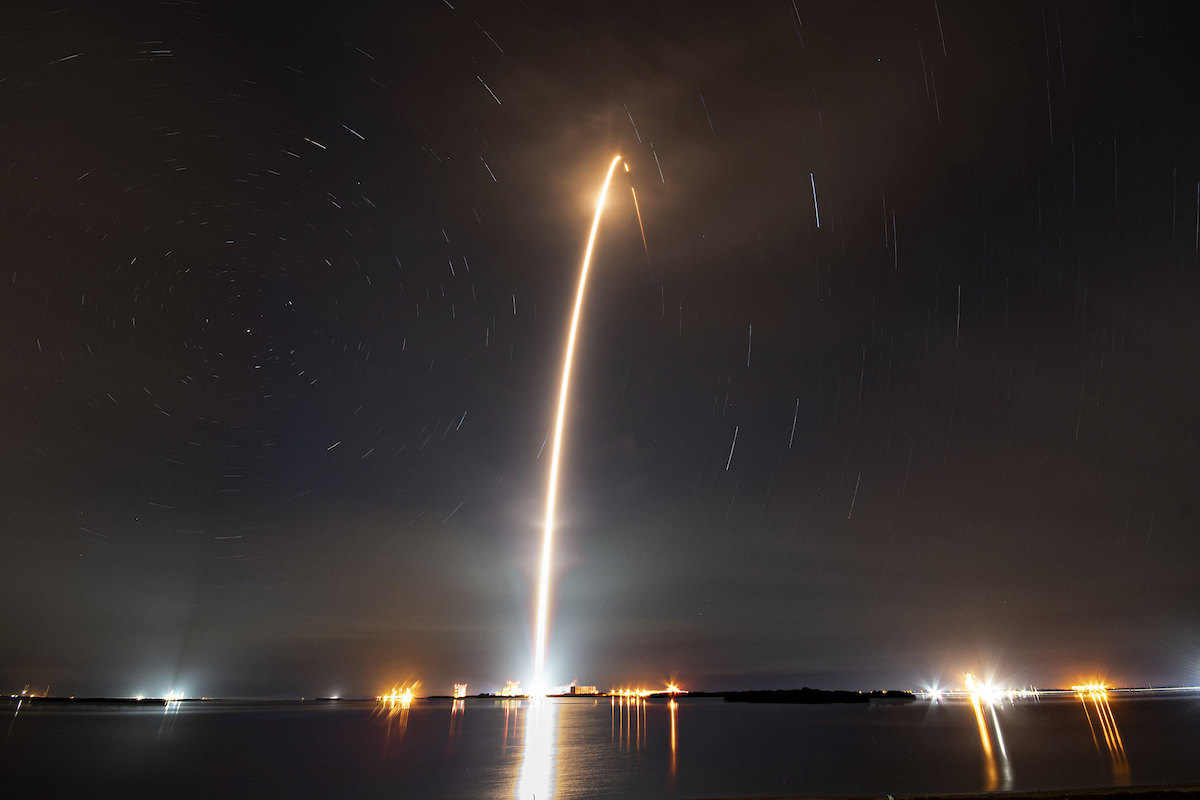EDITOR’S NOTE: This launch was delayed to 6:12 p.m. EST (2312 GMT) on Thursday, Dec. 2.

Forecasters predict a 90% chance of good weather Wednesday night at Cape Canaveral for launch of a SpaceX Falcon 9 rocket with a fresh group of Starlink internet satellites.
SpaceX is readying a Falcon 9 launcher for liftoff at 6:20 p.m. EST (2320 GMT) Wednesday from pad 40 at Cape Canaveral Space Force Station. The two-stage launcher will place another batch of Starlink satellites into orbit a few hundred miles above Earth at an inclination of 53.2 degrees to the equator.
Mostly clear skies and mild temperatures are expected Wednesday evening, according to an outlook from the U.S. Space Force’s 45th Weather Squadron.
The forecast team says a “rather benign weather regime” will remain in place on Florida’s Space Coast through the middle of the week.
“Surface high pressure is expected to develop over the western Gulf of Mexico and will extend into the southeastern U.S.,” forecasters wrote in a launch weather forecast. “As a result, there will be light winds during the launch window and limited low-level moisture. The primary concern for a Wednesday evening launch is a few cumulus clouds with the onshore flow.”
Winds are predicted to be from the northeast at 10 to 15 mph, with a temperature of around 70 degrees Fahrenheit for the instantaneous launch window Wednesday. Forecasters expect identical weather conditions during a backup launch opportunity Thursday evening.
SpaceX rolled out the Falcon 9 rocket for the next Starlink mission from its hangar Monday and erected it vertical on pad 40. A static fire test is planned as soon as Monday night, when SpaceX’s launch engineers will oversee the loading of kerosene and liquid oxygen into the two-stage rocket for a brief on-pad firing of the Falcon 9’s Merlin main engines.
Hold-down clamps will keep the rocket on the ground as the nine Merlin 1D engines throttle up to produce 1.7 million pounds of thrust. The test-firing will last less than 10 seconds.
The mission will use a previously-flown booster from SpaceX’s Falcon 9 inventory. But SpaceX hasn’t yet confirmed which booster is assigned to the Starlink mission, which is designated Starlink 4-3.
SpaceX also has not confirmed the number of Starlink satellites on-board the 229-foot-tall (70-meter) rocket. The previous Starlink mission, which kicked off deployment of a new phase of the Starlink network, carried 53 satellites, all with inter-satellite laser links.
The Nov. 13 launch of the Starlink 4-1 mission was the first to go into a new “shell” some 335 miles (540 kilometers) above Earth.
Most of the Starlink satellites launched so far have deployed into a 341-mile-high (550-kilometer), 53-degree inclination orbit, the first of five orbital shells SpaceX plans to complete full deployment of the Starlink network. SpaceX finished launching satellites in that shell with a series of Starlink flights from Cape Canaveral from May 2019 through May of this year.
Since May, SpaceX has rushed to complete development of new inter-satellite laser terminals to put on all future Starlink satellites. The laser crosslinks, which have been tested on a handful of Starlink satellites on prior launches, will reduce the reliance of SpaceX’s internet network on ground stations.
The ground stations are expensive to deploy, and come with geographical — and sometimes political — constraints on where they can be positioned. Laser links will allow the Starlink satellites to pass internet traffic from spacecraft to spacecraft around the world, without needing to relay the signals to a ground station connected to a terrestrial network.
SpaceX is currently providing interim internet services through the Starlink satellites to consumers who have signed up for a beta testing program.
In September, SpaceX launched the first batch of 51 Starlink satellites into a 70-degree inclination orbit on a Falcon 9 rocket from Vandenberg Space Force Base. That orbital shell will eventually contain 720 satellites at an altitude of 354 miles (570 kilometers).
Aside from the 53-degree and 70-degree orbital shells, SpaceX’s other Starlink layers will include 1,584 satellites at 335 miles (540 kilometers) and an inclination of 53.2 degrees, and 520 satellites spread into two shells at 348 miles (560 kilometers) and an inclination of 97.6 degrees.
The mission Wednesday will be the second Starlink flight to target the 53.2-degree inclination orbit, slightly offset from the 53-degree inclination planes populated during the first phase of the Starlink network deployment.
SpaceX has regulatory approval from the Federal Communications Commission for approximately 12,000 Starlink satellites. The company’s initial focus is on launching 4,400 satellites on a series of Falcon 9 rocket flights. SpaceX’s next-generation launcher, a giant rocket called the Starship that has not yet reached orbit, may eventually be tasked with launching hundreds of Starlink satellites on a single mission.
The launch Wednesday will be the 32nd Falcon 9 flight dedicated to hauling satellites into orbit for the Starlink program.
It will also be the 27th Falcon 9 launch overall this year, exceeding a mark of 26 Falcon 9 missions SpaceX completed in 2020.
Email the author.
Follow Stephen Clark on Twitter: @StephenClark1.
